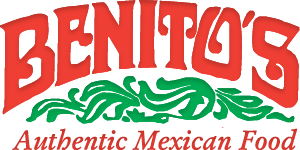What Kind of Beef Cuts Is Used in Mexican Food?
What Kind of Beef Cuts Is Used in Mexican Food? Beef is one of the widely consumed meats in Mexican culture. In fact, some of the most well-loved Mexican dishes feature beef as their main ingredient, such as burritos, fajitas, tacos, and enchiladas.
Beef is widely used in Mexican cuisine because of its versatility, with different cuts offering variations in flavor, juiciness, and texture. If you’re a fan of Mexican food, you may be wondering what these beef cuts are.
Below, we delve into the different Mexican beef cuts used in this popular cuisine and the types of dishes they commonly feature.
Round
Mexican beef round is a lean cut that consists mainly of the animal’s rear leg and rump. This beef cut can be tough, considering that it comes from a portion of the animal that gets plenty of exercise.
The upper portion, called the top round, is relatively more tender and is one of the few beef cuts cooked as a whole roast in Mexican cuisine. While most foreigners may feel that the cut isn’t marbled enough for such a cooking method, Mexican cooks compensate for the lack of fat by making incisions in the meat and inserting pieces of bacon or, at times, serrano ham.
Meanwhile, the lower portions that contain tendons, cartilage, ligaments, and other connective tissues are often slow-cooked until they become tender. They are often used in braised dishes and stews, like barbacoa and birria de res.
Chuck
Beef chuck is the cut that contains less fat and is often firm and chewy. The upper part of the chuck, found on the neck portion of the animal, is often used in a broth dish called jugo de res.
The shoulder portion of the chuck, which is relatively more tender, is commonly used for pot roasts and chuck steaks. On the other hand, the bottom portions are used for pot roasts or are used as ground meat for taco dishes.
Brisket
Located under the chuck, the beef brisket is widely known as one of the animal’s least tender cuts. It comes from the cow’s breast section just beneath the first few ribs and contains an extensive network of connective tissue collagen, which makes the meat tough.
Beef brisket requires long cooking times under low heat to break down the collagen and make the meat more tender and juicy. It is typically cut into smaller pieces and used for stews or slow-cooked until they can be shredded and used for tacos, enchiladas, and tostadas.
Short Plate
The beef short plate is a cut found just under the rib. It features short ribs and contains a lot of cartilage, making it perfect for braising under low temperatures to dissolve the cartilage and create tender, flavorful meats with thick sauces.
Below the short ribs lie the skirt steak. Although it tends to be a little tough because it contains the diaphragm muscle, it works well when marinated and cooked quickly over high heat. It’s also one of the best Mexican beef cuts for fajitas.
Flank
The beef flank is the cut located just above the short plate. It’s commonly referred to as the flank steak, although it’s not a steak at all. Instead, it comes from the animal’s belly muscles and contains almost no fat. Nevertheless, it is full of flavor and is best enjoyed when marinated and cooked fast over high heat or slow-cooked and braised.
For Mexican food, the beef flank is a cut of choice when making shredded meats for dishes like salpicón, taquitos, and chalupas. It can also be used for fajitas, although the short plate is preferred. Meanwhile, fatty Mexican beef cuts from the flank are called the pancita or panza and are used for menudo or mole de panza, a fatty stew that features tomatoes, garlic, and cilantro or oregano, depending on the region.
Rib
The beef rib is a primal cut from the cow’s forequarters between the beef chuck and the loin. It is one of the most tender beef cuts mainly because it comes from a part of the animal that doesn’t get much exercise. As a result, you get tender meat that is moist and flavorful, making it a desirable cut for steaks and roasts.
In Mexico, the rib can be ordered as bone-in rib roasts or rib-eye steaks. They are typically grilled over high heat and served with salsa, rice, or other side dishes. The boneless rib eye steaks can also be used for carne asada, although chuck steak is still more desirable.
Shank (Braise or stew)
The beef shank can be found on the cow’s thighs on the forequarter and the hindquarter. In Mexico, these are referred to as chambarete de mano (fore shank) and the chambarete de pata (hind shank).
The beef shank has plenty of connective tissue and is extremely tough. Because of its toughness, it is often slow-cooked and braised or stewed to tenderize the meat. It can be used in hearty soups like caldo de res, a Mexican beef bone and vegetable soup that also features cabbages, carrots, chayote, and corn.
Short Loin
The short loin is often considered one of the most tender Mexican beef cuts. It’s found on the front part of the loin primal cut and features numerous varieties that are also some of the most desirable parts of the animal. These include tenderloin, strip loin, porterhouse, and T-bone steaks.
As the most tender cut, the short loin is typically cooked as a roast, broiled, or pan-fried to preserve its flavor. A familiar restaurant dish that uses the short loin is Steak Tampiqueña, which uses a tenderloin steak pounded until it becomes one-eighth of an inch thick.
In some cases, the boney parts of the short loin are separated from the meat to create rich broths.
Sirloin (Broil, pan-fry or, for the tip, braise)
The sirloin sits right behind the short loin towards the cow’s rear leg. It is made up of the top sirloin butt, which is perfect for steak dishes like carne asada, and the bottom sirloin butt, which is suitable for braising and stews, such as bistec con papas and bisteces a la Mexicana.
Enjoy the Best Mexican Beef Dishes at Benitos Restaurant
Learning about the different cuts of beef used in Mexican cuisine is a good way of exploring the culture. However, tasting the food offers an even better, more authentic experience. At Benito’s Restaurant, we have been serving up authentic recipes of some of the most delectable dishes from Mexico since 1981. Come, explore different flavors, and experience the culture by dining with us. Make a reservation today!






